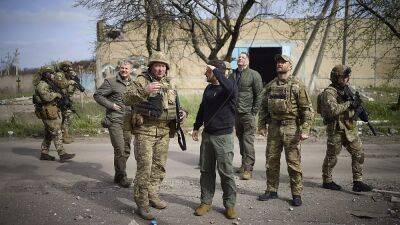UK says its Challenger 2 tanks for Ukraine will include shells containing depleted uranium
Britain said that together with its Challenger 2 tanks, it would also be sending Ukraine armour-piercing shells containing depleted uranium (DU).
Russian President Vladimir Putin accused London of proliferating "weapons with a nuclear component", comments Britain labelled "disinformation".
So, what are these depleted uranium shells? And are they related to nuclear weapons?
The isotope U-235 is extracted from natural uranium ore and used both as fuel for reactors and in nuclear weapons. This process is called enrichment. But the content of the "useful" isotope in the ore is insignificant - about 10 per cent. The remaining 90 per cent of the isotope contains negligible amounts of U-235, which consist mainly of the slightly radioactive U-238. This is depleted uranium which can be described as waste from the enrichment process.
Depleted uranium is very dense. This means that it is much heavier than, for example, steel shells of the same size. The force of energy, therefore, is very strong, enabling it to penetrate armour.
Depleted uranium does not explode, but it is pyrophoric - small fragments that can penetrate armour can easily be ignited. So, a projectile made of this material is an armour-piercing incendiary material.
And since this material is, in fact, uranium enrichment waste, it is relatively cheap and available in large quantities in countries with a developed nuclear industry.
These qualities attracted the US military in the early 1970s when it became necessary to find ways to counteract the new generation of Soviet tank armour.
The US mostly abandoned the use of other metals for armour-piercing cores. Depleted uranium is used not only in tank shells but also in high-speed smaller calibre guns of 25-30mm, which are








